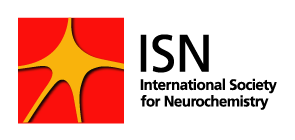It’s June! It’s a new season! It’s Pride Month. Some of you might not know, some of you might not care, but it’s still Pride Month: so, yeah! Celebrating and fighting for the rights of the LGBTQIA+ community is only one of many layers in the ED&I topic.
Equity, Diversity and Inclusion. Yes, we know the topic is everywhere, or is it? Actually, we haven’t talked about it in this YSSC article series yet. Why is that? It really is a multi-dimensional topic that factors in people with culturally, racially and linguistically diverse backgrounds, LGBTQIA+ identities, disability, neurodiversity, and differences in age, gender, religion… and this list is by no means exhaustive. Does this seem complicated? We are scientists at ISN, so if anything, topics of such nuance and complexity are motivating for us, they challenge us and remind us to check our assumptions. Big questions with many considerations are what keep us going. If we feel drawn in by the diversity of proteins, why should we shy away from the diversity of communities? Frankly, the complexity and fear of saying the wrong thing may hold people back, but it is not a reason to stay silent on the topic. So we won’t – stay tuned!
We are the YSSC so we can only speak for ourselves but looking amongst us we are pretty diverse. We are seven people from six different countries, five different continents and two women. We differ in race, culture, religion and (speaking for myself) people who are not straight. The ISN officers we work with include two women and one man, all from different continents. ISN council members are from USA, Chile, Japan, Australia, Nigeria, Italy, Estonia, and Germany. Many of our ambassadors are racially diverse and proposals for all our events are rated for their consideration of gender and regional balance. The point of listing all this is not to say: “We are all good”. It is to show that we are aware of the need for and importance of diversity. I have chaired the YSSC for nearly four years now and if I have learned one thing, it was that diversity maximised our potential. It enabled us to better understand what webinar or workshop topics would be helpful for young members. It keeps our eyes open for issues that young scientists face. Someone at a well-funded university laboratory may take for granted the availability of travel money to attend the next meeting; however, for us as representatives it is crucial to remember that not all scientists can do that.
Favouring equity and diversity brings out the best in discussions and strengthens members’ perspectives on so many levels. Diverse teams reap rewards.1 People from different backgrounds and cultures bring different views and talents that cannot be achieved with singular viewpoints. I believe that this is not just the case for us, but for the whole of ISN. How else could an international society thrive if not by actively including various perspectives and breaking down barriers?
So, whilst there is diversity in ISN and we are very aware of its value, there is always more to be done. More communication, more ideas generated, more opportunities taken. Of course, all this is much easier said than done and change can be slow. Nonetheless, it is necessary and it would be unacceptable not to address it. So this is the beginning. This is the start of a global conversation. Here we go! Do you want to contribute, or do you have any thoughts about ED&I in ISN? Email the YSSC at yssc@neurochemistry.org!
On behalf of the YSSC,
Eva
1 Hunt, V., Layton, D., Prince, S., 2015. Why Diversity Matters. McKinsey & Company. https://www.mckinsey.com/business-functions/organization/our-insights/why-diversity-matters
